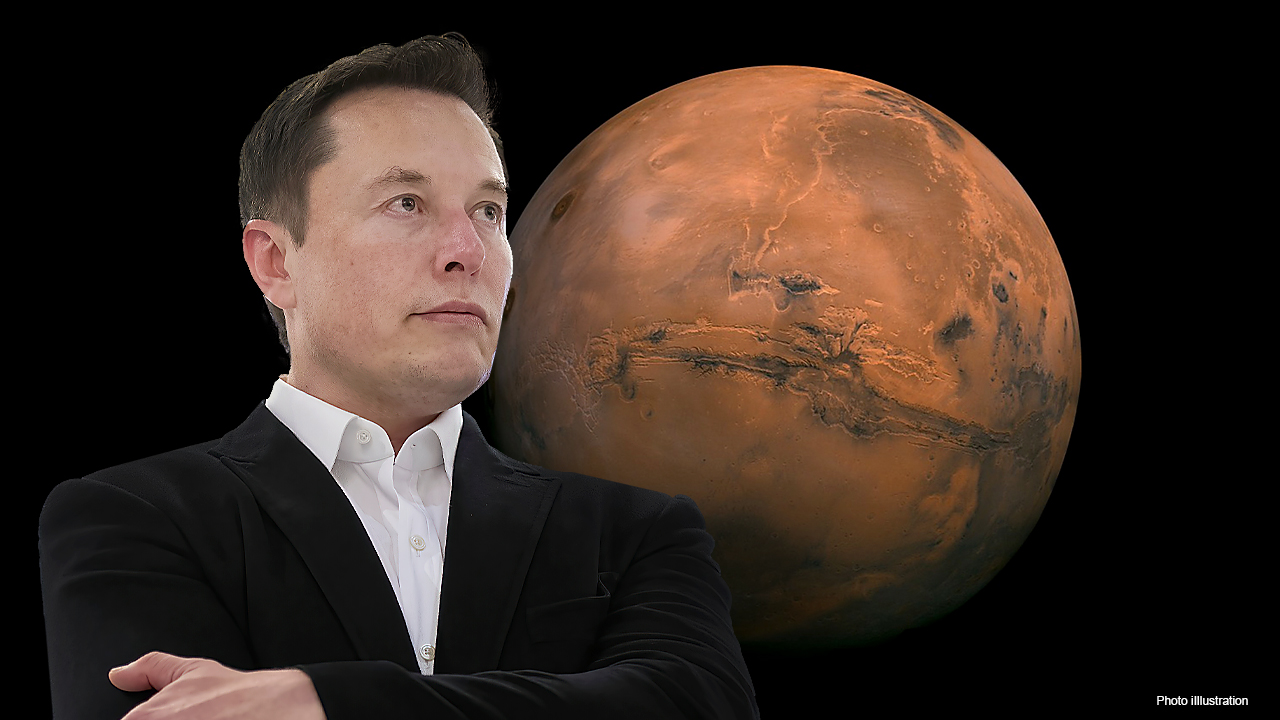OUT OF THIS WORLD: Elon Musk Confirms SpaceX’s Starship Will Travel to Mars by 2026, With Tesla’s Humanoid Robot, Optimus, Onboard
In an extraordinary announcement that has captivated the world, Elon Musk, the visionary CEO of SpaceX and Tesla, confirmed that SpaceX’s Starship will embark on its journey to Mars by the end of 2026.

Musk revealed that this groundbreaking mission will carry a highly anticipated passenger—Tesla’s humanoid robot, Optimus. If everything goes according to plan, Musk predicts that humans could be living on Mars as early as 2031, marking one of the most ambitious goals in space exploration history.
Elon Musk has always been at the forefront of pushing the boundaries of technology, and his plans for Mars have captured the imagination of millions.
With SpaceX’s successful launches and the development of reusable rockets, Musk’s vision for interplanetary travel has moved from science fiction to reality. Now, with the confirmation of Starship’s Mars mission, Musk has taken yet another bold step toward making life on Mars a tangible goal for humanity.
The announcement has sent ripples throughout the global scientific community, space enthusiasts, and the general public. Musk’s SpaceX company is already known for its groundbreaking work in space travel, and the Starship project is seen as the key to realizing Musk’s dream of interplanetary colonization.
Designed as a fully reusable spacecraft, Starship is expected to carry large payloads and crews to destinations like the Moon, Mars, and beyond. Musk has emphasized that Starship is not just a vehicle for exploration but the cornerstone of SpaceX’s mission to make life multi-planetary.
Optimus, Tesla’s humanoid robot, will be a significant part of the journey to Mars. Initially revealed by Musk in 2021, Optimus is designed to be a versatile, highly intelligent robot capable of performing a range of tasks that could assist astronauts and future Martian settlers.
Optimus is equipped with Tesla’s cutting-edge AI technology, allowing it to learn, adapt, and perform a variety of functions in a completely autonomous manner. Musk sees Optimus not only as a technological marvel but also as an essential tool for ensuring the success of humanity’s long-term presence on Mars.

The inclusion of Optimus on the Mars mission adds a new dimension to SpaceX’s plans, as it will provide crucial assistance to astronauts during the journey.
The humanoid robot’s ability to perform tasks like setting up habitats, managing supplies, and even helping with scientific experiments will be invaluable on Mars, where human resources are limited. Musk has long advocated for the integration of AI and robotics in space exploration, and Optimus represents the next step in realizing this vision.
For Musk, the Mars mission is not just about exploration; it’s about ensuring humanity’s survival and establishing a permanent presence beyond Earth. The timeline for reaching Mars has been an ongoing topic of discussion, with Musk pushing for aggressive deadlines.
By 2026, SpaceX plans to send an uncrewed Starship mission to Mars to test all systems in real-world conditions. If this mission is successful, it will pave the way for the first crewed missions, potentially within the next five years.
Musk’s ultimate goal is to establish a self-sustaining human colony on Mars by 2031, which would be a historic achievement for humanity. The colony would serve as a backup for humanity in case of catastrophic events on Earth, while also providing a new frontier for scientific discovery and technological innovation.
Musk has repeatedly emphasized the importance of making life on Mars a reality, citing it as critical for the long-term survival of the human species.
The announcement of Starship’s Mars mission and the inclusion of Optimus has generated immense excitement but also some skepticism. Critics point out the many challenges that still need to be overcome, such as radiation protection, sustainable life support systems, and the immense logistical challenges of getting to and living on Mars.
Musk himself has acknowledged these hurdles, stating that the journey to Mars will require significant technological advancements, rigorous testing, and unforeseen challenges. However, his track record with SpaceX—particularly with the successful development of reusable rockets and the Starship prototype—has convinced many that he is on the right path.

The integration of AI and robotics will be a key component in overcoming these challenges. Optimus and other robotic technologies could play a vital role in building infrastructure on Mars, such as assembling habitats, mining resources, and conducting scientific research.
By sending robots ahead of human crews, Musk hopes to lay the groundwork for a sustainable colony that can thrive in the harsh Martian environment.
As the timeline for the Mars mission approaches, excitement around SpaceX and Tesla’s intertwined technologies continues to grow. SpaceX’s role in advancing space travel, combined with Tesla’s innovations in AI and robotics, has positioned Musk as one of the most influential figures in the tech and space industries.
His vision for Mars and the future of humanity beyond Earth is pushing the boundaries of what is possible, sparking inspiration and debate on a global scale.
While the mission to Mars still faces numerous technical and logistical challenges, Musk’s confidence in the capabilities of SpaceX, Tesla, and Optimus has inspired a new wave of hope for the future of interplanetary exploration.
The next decade promises to be an exciting time for space travel, as humanity inches closer to its ultimate goal of becoming a multi-planetary species.
In conclusion, Elon Musk’s confirmation of SpaceX’s Starship mission to Mars by 2026, with Tesla’s humanoid robot Optimus onboard, marks a pivotal moment in the history of space exploration.
With plans for human colonization of Mars by 2031, Musk’s vision continues to capture the imagination of millions worldwide. As the technologies evolve and the mission progresses, the dream of life on Mars moves closer to reality, promising a new era for humanity’s future in space.